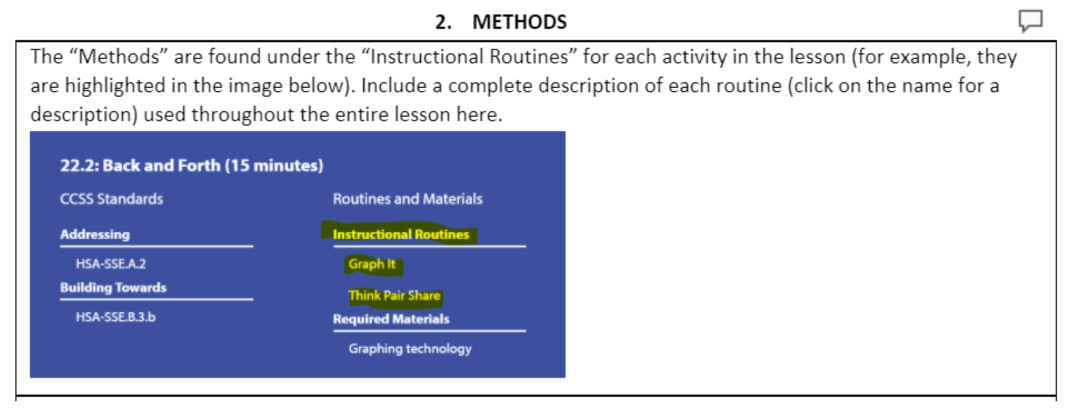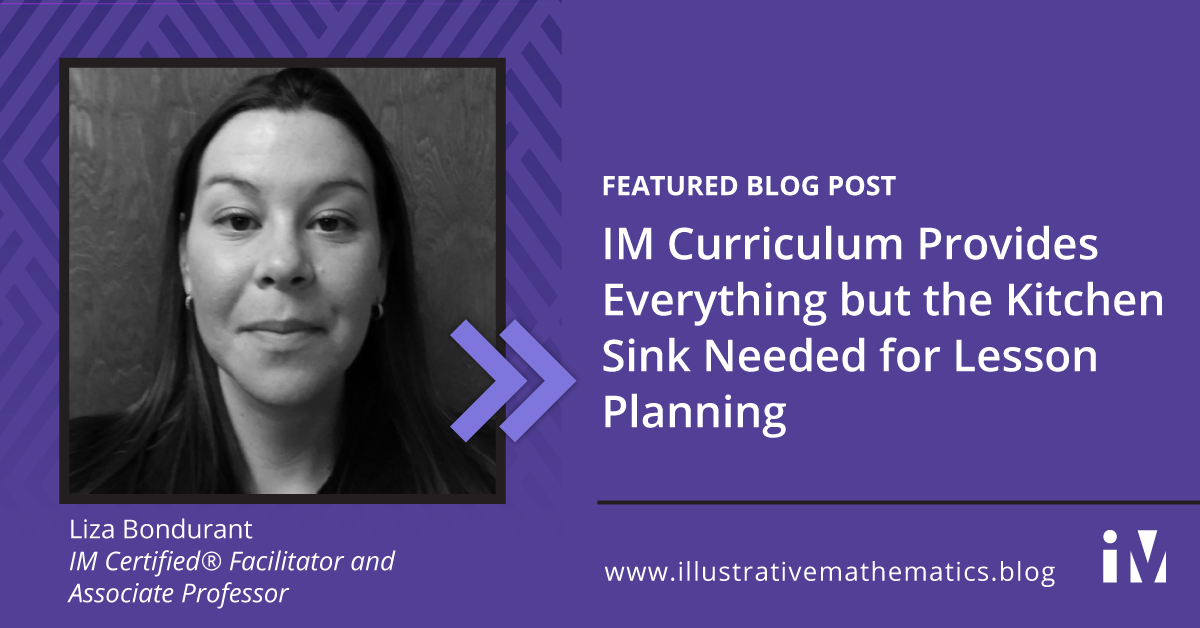By Liza Bondurant, IM Certified® Facilitator/Associate Professor
Do you spend hours hunting down materials for your lesson plans? How can you be sure the materials are aligned to your standards? How can you make your lesson planning process more efficient and effective?
According to TNTP’s The Opportunity Myth, K–12 students are spending too little classroom time on meaningful work, and instead spending a majority of their time on assignments that ask too little of them and don’t reflect grade-level expectations. This results in many K–12 students leaving school without the knowledge and skills they need to be successful. According to a 2020 report by the RAND Corporation, many teachers spend endless hours creating materials from scratch, searching for activities, or supplementing a core set of materials. Yet, they may not know if their plans meet state standards or provide students with the knowledge and skills they need to be successful in the next grade level.
High-quality instructional materials (HQIM) are curricula that are fully aligned to the standards and vision for what students should know and be able to do in each course. They include a full year’s worth of teacher and student materials that support students’ mastery of grade-level content materials and reflect evidence-based research on good instruction. The Illustrative Mathematics® (IM) curriculum has been classified as a HQIM by EdReports.org, Inc. and Mississippi’s Department of Education. According to the Carnegie Corporation and the Aspen Institute, anchoring educator professional learning in HQIM can have positive impacts on teaching and learning.
I teach math and also math education courses at Delta State University in Mississippi. In my secondary math methods course, mathematics teacher candidates working with grades 7–12 learn to write lesson plans. Then, during their internship experience, candidates are required to plan a unit. Candidates’ unit plans assess their mastery of the following 2020 CAEP NCTM standards:
Standard 3: Knowing Students and Planning for Mathematical Learning
Standard 4: Teaching Meaningful Mathematics
Standard 5: Assessing Impact on Student Learning
The mandatory lesson plan template includes the following sections:
- Objectives
- Standards
- Assessments
- Instructional Strategies
- Student Groupings
- Vocabulary
- Connections (to the ELA CCSS, other content area standards, and the local community)
- Tools & Technology
- Access & Challenge
- Activity Plan.
When candidates initially open a blank lesson plan template, many feel overwhelmed. Prior to using the IM curriculum, I held classes in the library, because candidates needed to pull together information from several resources to complete the template. Candidates typically invested several hours completing their first draft of each lesson plan. Next, they spent additional time completing iterations of revisions based on my feedback before finalizing each lesson plan. This arduous process left candidates dreading lesson planning, and bogged them down in details that displaced time for bigger-picture thinking and conversations about their lesson plans.
Angelise Campbell, Fall 2019 graduate
“During Methods I felt like the lesson plans needed to be perfect. They required so many details and completing them was difficult.”
 Edward Williams, Fall 2018 graduate
Edward Williams, Fall 2018 graduate
“To be honest, I felt super confused. It felt like it was an assignment that I just had to do. I did not feel like it was a learning experience. I used probably 20 different resources. It took me five hours over the course of several days to finish the first one. Plus the revisions took me an additional hour. It left me feeling underprepared to be a teacher. I had no idea how people could do this on a regular basis.”
Guiding candidates through the laborious lesson planning process also left me feeling tired and dissatisfied. Even with a library full of resources and my assistance, it took a long time to find quality materials, and students had to piece together components from a variety of materials to complete the template. Since I had followed a similar process as a teacher candidate, I lamented that maybe this was how lesson planning for teacher candidates would always be.
Outside of my role as a university instructor, I began working as a contract writer and reviewer for LearnZillion and IM in 2012. I am thoroughly impressed with the IM K–12 Math curricula. My favorable impression led me to apply to become a Illustrative Mathematics Certified Facilitator (IMCF) in 2018. After gaining a thorough understanding of IM K–12 Math through the IMCF training and the professional learning (PL) experiences I facilitated, I was eager to share IM K–12 Math with the teacher candidates in my Methods and Internship classes. In addition to being rigorously connected to the Common Core math standards, IM K–12 Math is straightforward to use for the unit plan assignment. There is a free version accessible on the internet available, and the open license ensures that candidates will not have to worry about any copyright violations.
Beginning spring 2019, I introduced candidates to the IM curriculum. I provided candidates with an exemplar template in addition to the blank lesson planning template. While creating the exemplar, I was fascinated that, other than the connections section, I was able to complete the lesson planning template using only IM K–12 Math! I added comments and images to the exemplar template to help candidates locate the needed information in the IM curriculum.
 From IM 9–12 Math (Algebra 1 Unit 7, Lesson 22, Activity 2)
From IM 9–12 Math (Algebra 1 Unit 7, Lesson 22, Activity 2)
Using IM K–12 Math, candidates efficiently completed the lesson planning template in a fraction of the time. I noticed that their first drafts were higher quality and required few revisions. I also observed that candidates were able to focus on the “how” and “why” of their lesson plans more, because less time was devoted to tracking down the “what” needed to fill out their lesson plan template. For example, candidates had time to consider a variety of different solution strategies (at varying degrees of correctness and completeness) and representations to the tasks.
 Miltesha Nelson, Spring 2022 graduate
Miltesha Nelson, Spring 2022 graduate
“IM was a very helpful and dependable source and using IM saved me a lot of time. Instead of doing everything from scratch like I had done the previous year, the majority of everything needed was right there. . . . The activities were challenging, but accessible to students. Many students found the activities very interesting and fun because they not only connected to math but to other subjects like English, science, and the real-world.”
 Emily Mayeux, Fall 2021 graduate
Emily Mayeux, Fall 2021 graduate
“Most of my lesson planning resources came from IM. IM was better than other resources I’ve used, because it provided more information, like examples of student responses, explanations of how to implement the activities, accommodations for students with disabilities and English learners, and a variety of problem types that often had real-world connections. I think there were a variety of challenging activities that were still accessible and my students found the activities fun.”
Next Steps
Math teachers design learning opportunities to meet the needs of each and every learner in their lesson plans. Thorough planning helps educators prepare for engaging instruction. Lesson planning can also be an overwhelming task. Having access to high-quality instructional materials, such as the IM K–12 Math curriculum, helps teachers efficiently prepare detailed lesson plans. Math teacher educators and math teachers feel relieved when they have access to high-quality instructional materials, because they can focus on the “how” and “why” of the lesson instead of the “what” needed to fill into their lesson plan template.

